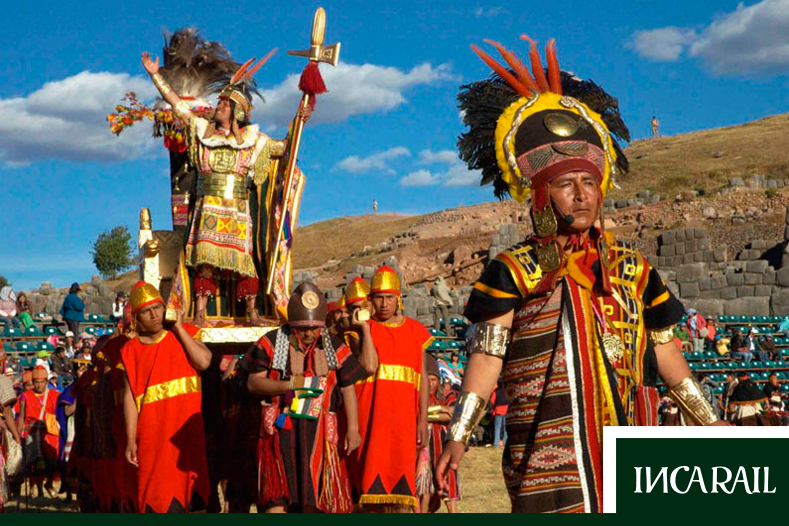When you are looking for information about Peru on the internet, you often find the word Tahuantinsuyo, a term that you may have never heard before. What exactly is the Tahuantinsuyo? How did it appear? How far did it extend?
The first thing we want to clarify is that when we talk about Tahuantinsuyo, we are referring to the Inca Empire. Do you want to know more? Here we tell you the key points for you to understand this term.
Origin

There are many stories about the emergence of the Inca Empire, but here we are going to tell you the one based on Inca mythology.
According to the myth, the origin of Tahuantinsuyo is based in the history of Manco Cápac and Mama Ocllo. This couple, who were brothers at the same time as husband and wife, were sent by the Sun God to find the right place to found a city in which to civilize people who lived like wild animals.
To do this, he gave them a gold cane that they would have to nail into the land of the places they arrived until they found one in which the rod sank easily. The site with these characteristics is where the city of Cusco is currently located.
Thus, they chose this place to found this new city that over the years would become the capital of the Tahuantinsuyo and, for this civilization, the navel of the world. However, and despite its importance in history, the Tahuantinsuyo did not last more than a century: from its creation in 1438 until its fall in 1533, only 95 years passed.
Extension
With 2,500,000 km², the Tahuantinsuyo was the most extensive empire in the history of pre-Columbian America. Its territory comprised from the south of Colombia to the center of Chile, passing through Ecuador, Argentina, Bolivia and, of course, Peru, where its greatest political force was concentrated.
All this territory was conquered through wars and alliances that were carried out with other cultures between the XV and XVI centuries.
Name’s origin
The name Tahuantinsuyo comes from two Quechua words: tahua, which means four, and suyo, which means region. This is because the Inca territory was divided into four
regions: the collasuyo, southeast; the chinchaysuyo, to the northwest; the antisuyo, to the northeast and the continsuyo, to the west.
The role of the Inca
 As you already know, the Inca was the highest leader of the Tahuantinsuyo. During the history of this empire there were five official Incas: Pachacútec, Túpac Yupanqui, Huayna Cápac, Huáscar and Atahualpa. The latter was ruling when the Spanish conquerors arrived in Peru.
As you already know, the Inca was the highest leader of the Tahuantinsuyo. During the history of this empire there were five official Incas: Pachacútec, Túpac Yupanqui, Huayna Cápac, Huáscar and Atahualpa. The latter was ruling when the Spanish conquerors arrived in Peru.
After the arrival of the Spaniards, there were three colonial Incas: Túpac Hualpa, Manco Inca and Paullu Inca. On the other hand, after the rebellion of Manco Inca against the Spaniards, a kind of new Inca state was created that lasted around forty years and that had four rulers, among which Túpac Amaru stands out.
Fall of the empire

The fall of the Tahuantinsuyo began with the war of the brothers Huáscar and Atahualpa. When Huayna Cápac, father of the two brothers, died, Huáscar was in Cusco and Atahualpa in Ecuador. Thus, the first one was named Inca of the empire while the second one was appointed a governor of Quito.
But the relationship between both brothers was getting worse with the passage of time until they fought for the Inca throne in a civil war that Atahualpa won and with which he came to proclaim himself as the last Inca.
With this situation of weakness and discontent of much of the Tahuantinsuyo society, the Spaniards arrived at the Inca Empire. Francisco Pizarro and his men arrived in the city of Cajamarca, where Atahualpa was, and they arrested him. After negotiating his release in exchange for a room full of gold and for the Incas to pay, the Spaniards broke the deal and murdered Atahualpa.
According to many historians, the Spanish victory and the consequent fall of the largest empire in America would not have been possible without the help of allies such as the Cañaris or the Chachapoyas.
As we have previously told, the Spaniards named up to three more Incas and had to fight against the new empire that formed Manco Inca in Vilcabamba, ending completely with the history of the Inca Empire in 1572 with the execution of Túpac Amaru.
Traveling is not only visiting places, but also soaking up its history and culture. Now that you know more about the Tahuantisuyo, it is time to visit Cusco and take the train to Machu Picchu and walk through its streets to travel through time. We are waiting for you!












